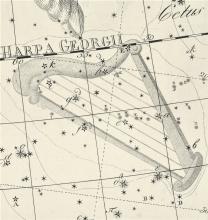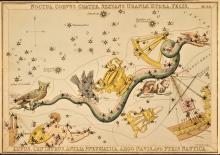Listen to today's episode of StarDate on the web the same day it airs in high-quality streaming audio without any extra ads or announcements. Choose a $8 one-month pass, or listen every day for a year for just $30.
You are here
The Crane
By the early 17th century, European sailors were being guided through southern seas by several birds — not on the wing, but in the stars. Five southern constellations were named for birds: the peacock, toucan, crane, and bird of paradise, plus a mythological bird that’s well known to Harry Potter fans: the phoenix.
All of the constellations were outlined by Johannes Bayer in a star atlas published in the early 1600s.
Those parts of the sky were unknown to Europe until explorers began heading southward. They mapped the stars and brought their observations back to Europe. A Dutch astronomer connected the stellar dots to create a dozen constellations, which Bayer first depicted in his atlas.
Most of the birds are so far south that they’re impossible for most American skywatchers to see. But one of them strides low across the south on November evenings: the crane, known by its Latin name, Grus.
If you’re south of about Denver, look for the crane strolling along the horizon in early evening, with its long neck extending well up into the sky. The crane is to the lower right of Fomalhaut, the brightest star in that region of the sky.
The star that marks the crane’s head is visible from most of the country, standing due south a couple of hours after sunset. Known as Gamma Gruis, it’s much bigger, brighter, and heavier than the Sun. It shines at us across more than 200 light-years of space — the bright eye of a beautiful southern bird.
Script by Damond Benningfield






